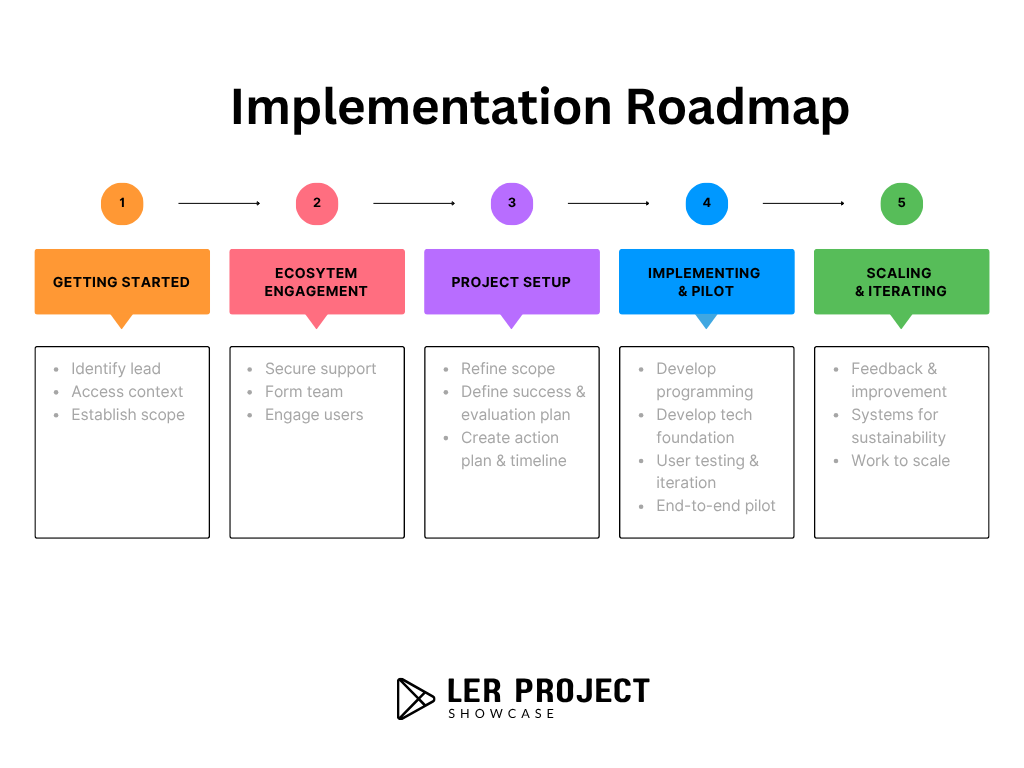Getting Started (Prework)
Set the stage for an LER implementation project. Establish leadership, identify high-level objectives and understand factors that may impact the work.
Implementing a Learning and Employment Records LER system is a multi-phase process that requires strategic planning, collaboration, and iteration. While the process is not always linear, the SkillsFWD team has identified five overarching phases of work that seem to be relatively consistent across projects. This guide outlines those phases and details steps and considerations within each to ensure a successful implementation and to set the foundation for sustainability.

A comprehensive 5-phase approach to successfully implement Learning and Employment Records in your organization.
Set the stage for an LER implementation project. Establish leadership, identify high-level objectives and understand factors that may impact the work.
Build a team that will support your work and connect with stakeholders to align your work with their needs. Engage supporters, implementers, and beneficiaries.
Create a clear plan and mechanisms for accountability. Refine scope, define success metrics, and develop a comprehensive action plan with timeline.
Enable completion of a full LER lifecycle with a subset of target users. Test technology and processes in action with real users and use cases.
Establish structures for continuous improvement and sustainable success. Expand scope to reach additional populations and incorporate new functionality.
Access comprehensive resources including project strategy guides, technical implementation plans, and evaluation frameworks to support your LER journey.

This phase of work sets the stage for an LER implementation project to get underway. In this phase, it is important to establish leadership, identify high-level objectives and understand factors that may impact the work.

This phase of work is all about building a team that will support your work and connecting with stakeholders to get a better understanding of how you can align your work with their needs. There are three key groups to connect with through this phase: those who will support and guide your work, those who will help you carry out the implementation process and those who stand to benefit from the implementation of LERs.

This phase is all about creating a clear plan and mechanisms for accountability. This should start with revisiting the initial scope and making adjustments to ensure it reflects the interests of the implementation team and others across the ecosystem. Then, the team should collaboratively develop an action plan that sets a clear timeline and responsibilities for executing the scope of the project. In this phase the team should also determine how to define success and measure progress.

In this phase, your team should enable the completion a full LER lifecycle with a subset of target users. This phase will allow you to see how the tech and processes you have developed work in action and consider how you may want to adjust your approach as you scale and iterate.

This phase should last in perpetuity. At the end of the pilot, the implementation team should reconvene to establish clear structures to continuously improve upon and ensure sustainable success for this project. In many cases, this may include expanding the scope of the initial pilot to reach additional populations or to incorporate additional functionality.
